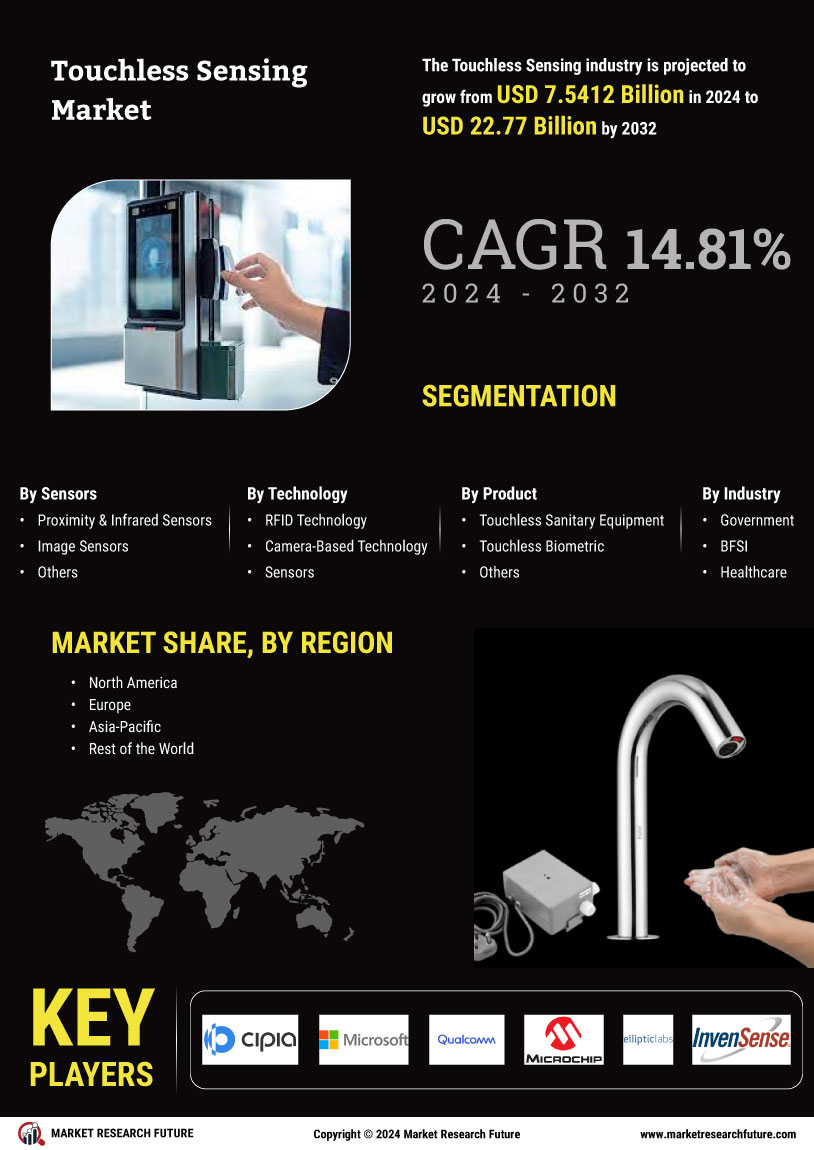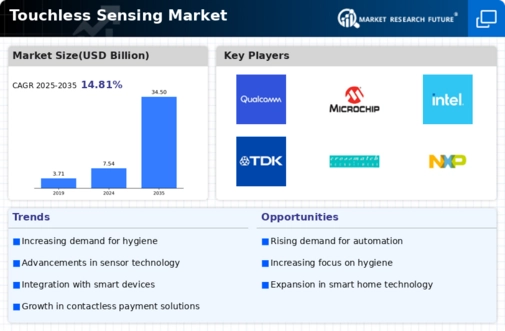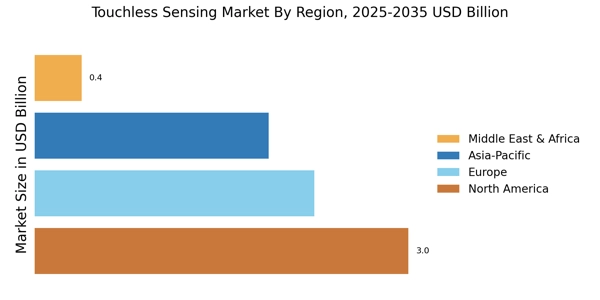Rising Demand for Contactless Solutions
The Touchless Sensing Market experiences a notable surge in demand for contactless solutions across various sectors. This trend is driven by the increasing consumer preference for hygiene and safety, particularly in public spaces. As organizations seek to minimize physical contact, touchless technologies are being integrated into everyday applications, from retail to transportation. Market data indicates that the touchless sensing segment is projected to grow at a compound annual growth rate of approximately 15% over the next five years. This growth reflects a broader shift towards automation and convenience, as consumers and businesses alike prioritize health and efficiency. Consequently, the Touchless Sensing Market is likely to witness innovations that enhance user experience while ensuring safety.
Rising Consumer Awareness and Preferences
Consumer awareness and preferences are evolving, significantly impacting the Touchless Sensing Market. As individuals become more informed about the benefits of touchless technologies, there is a growing inclination towards products that offer convenience and safety. This shift is particularly evident in sectors such as retail, where consumers prefer touchless payment options and self-service kiosks. Market Research Future indicates that consumer preferences are driving manufacturers to innovate and enhance their touchless offerings. As a result, the Touchless Sensing Market is likely to experience a transformation, with companies focusing on user-friendly designs and enhanced functionalities to meet the changing demands of consumers.
Increased Investment in Automation and Robotics
The Touchless Sensing Market is witnessing increased investment in automation and robotics across various sectors. Industries are increasingly adopting touchless technologies to streamline operations and enhance productivity. This trend is particularly evident in manufacturing, logistics, and healthcare, where automation is becoming essential for efficiency. Market data suggests that the automation sector is expected to grow significantly, with investments projected to reach hundreds of billions by 2027. As businesses seek to reduce labor costs and improve operational efficiency, the demand for touchless sensing solutions is likely to rise. This shift underscores the importance of the Touchless Sensing Market in driving innovation and operational excellence.
Growing Focus on Smart Cities and Infrastructure
The Touchless Sensing Market is significantly influenced by the growing focus on smart cities and infrastructure development. As urbanization accelerates, cities are increasingly adopting smart technologies to enhance efficiency and sustainability. Touchless sensing solutions are being integrated into public transportation systems, smart parking, and energy management, facilitating improved urban living. The market is expected to benefit from government initiatives aimed at promoting smart city projects, with investments projected to reach trillions in the coming years. This trend not only enhances the quality of life for residents but also positions the Touchless Sensing Market as a critical component in the evolution of urban environments.
Technological Advancements in Sensing Technologies
Technological advancements play a pivotal role in shaping the Touchless Sensing Market. Innovations in sensor technologies, such as infrared, ultrasonic, and capacitive sensors, are enhancing the accuracy and reliability of touchless systems. These advancements enable seamless interactions in various applications, including smart homes, healthcare, and automotive sectors. For instance, the integration of artificial intelligence with touchless sensing technologies is expected to improve user interfaces and responsiveness. Market analysis suggests that the increasing investment in research and development will further propel the growth of the touchless sensing segment, with projections indicating a market value exceeding 10 billion by 2026. This evolution underscores the importance of continuous innovation within the Touchless Sensing Market.
















Leave a Comment